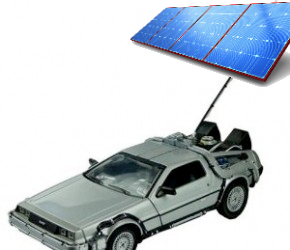New Local Solar Policy, Not DeLorean, Moving U.S. to Cleaner Future
In the past five years, a new U.S. renewable energy policy has quietly grown more popular, enabling enough solar power (1.21 gigawatts!) to send Michael J. Fox “Back to the Future.” CLEAN programs – Clean Local Energy Accessible Now – have been adopted in 14 states and can significantly increase the deployment of local solar power, says a new report from the Institute for Local Self-Reliance (ILSR).
The 1.21 gigawatts of distributed solar power planned under CLEAN programs (also known as “feed-in tariffs”) represents one of the largest expansions of solar power in the country, without a focus on the largest scale projects. CLEAN programs encourage rooftop and commercial-scale solar power located near where electricity is used.
“The rise of CLEAN programs is the answer to the question of capturing the economic benefits of clean energy development,” notes report author and ILSR senior researcher John Farrell. “States and municipal utilities have created CLEAN programs to enable their citizens to become local energy and jobs producers.”
Read the Report
The report provides a list of the 17 operational CLEAN programs, from the tiny Farmers Electric Cooperative program in Iowa to the 500 megawatt statewide program in California, to the just-launched CLEAN programs in Los Angeles and Long Island, NY. The report also explores the lessons learned from these early programs, so that policy makers looking to marry the energy and economic benefits of clean energy will be able to craft the most effective policy.
One of the big lessons is that state and local U.S. CLEAN programs begin to bring order to otherwise fragmented energy policy in the U.S.
“CLEAN is simple and comprehensive, unlike the hodge-podge of federal, state, and utility renewable energy incentives,” says Farrell.
“This local energy policy is getting us to a better future – and we don’t even need a time-traveling DeLorean.”
The report, U.S. CLEAN Programs: Where Are We Now? What Have We Learned? is available at ilsr.org
This post originally appeared on ILSR’s Energy Self-Reliant States blog.




